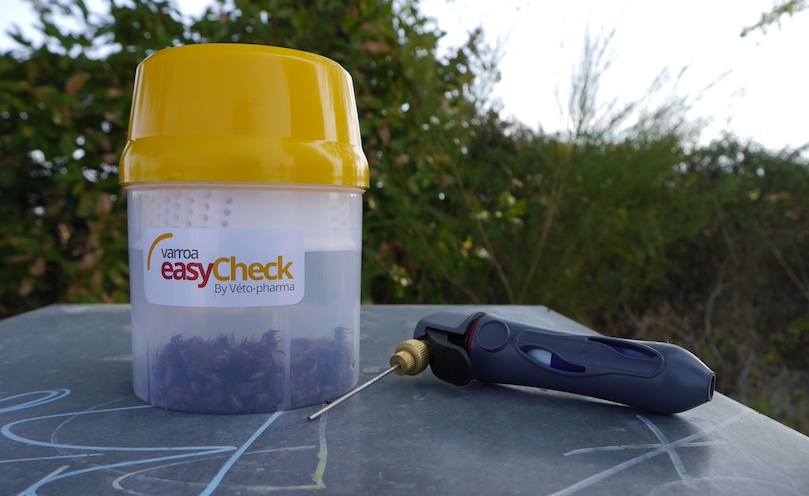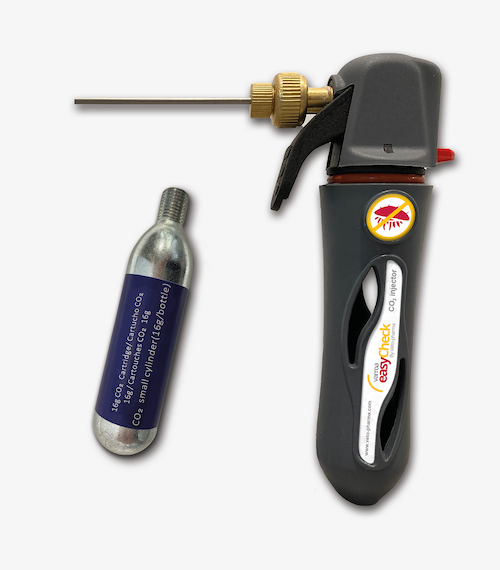 Véto-pharma
Véto-pharma The decades-long fight of beekeepers against one of the biggest enemies of the apicultural industry still remains a big issue. The varroa mite, Varroa destructor, since its migration from the Asian honey bee (Apis cerana) onto the Western honey bee (Apis mellifera) in the 1960s and 1970s, is widely regarded as the most dangerous parasites of honeybee colonies.
Varroa mite populations in honeybee colonies build up in the honey bee brood every season and can never be completely eliminated in honey bee populations where they are present. Inevitably, beekeepers are faced with no choice, but to fight the mite constantly. This calls for strategic decisions and requires some planning ahead. Putting this into perspective, monitoring varroa has become a crucial everyday component of beekeeping today.
Monitoring allows beekeepers to avoid critical levels of varroa mite infestation and serves as a guide in effectively timing miticide applications.

With our focus on apiculture, Veto-pharma made available the first ready-to-use “3 in 1” monitoring tool: Varroa EasyCheck. Alcohol wash, powdered sugar roll and CO2 injection are the three monitoring methods using the same tool – Varroa EasyCheck. Véto-pharma is pleased to inform you it has the injector and cartridge for the CO2 injection in stock now.

CO2 injection is a monitoring method that can be as effective as alcohol wash, but it leaves your sample of bees alive. The process is super clean and easy. This procedure also saves time as it has proven to be the fastest of all 3 methods.
Unlike the sugar roll method, which can get messy (especially during honey flows, when bees can regurgitate the nectar, or during humid weather) and which may require more time, the CO2 injection method is quick (30 secs) and highly effective, comparatively.
The CO2 injection method for varroa monitoring is easy as pie: Collect a sample of 200 or 300 bees with the white basket, preferably from a frame of capped brood (make sure the queen is not in the sample).
Grab your tools (Varroa EasyCheck, injector, and cartridge), as we keep at it to defeat the mite and keep our bees safe.
Ask your retailer for your Varroa EasyCheck, CO2 Injector, and cartridges. It is all about varroa mites monitoring in easy-peasy mode.
Go check our step-by-step video tutorials on www.varroa-easycheck.com
ESY-47-EU-N01-01/22
Join the Véto-pharma community and receive our quarterly newsletter as well as our occasional beekeeping news. You can unsubscribe at any time if our content does not suit you, and your data will never be transferred to a third party!
© 2019-2025, Véto-pharma. All rights reserved